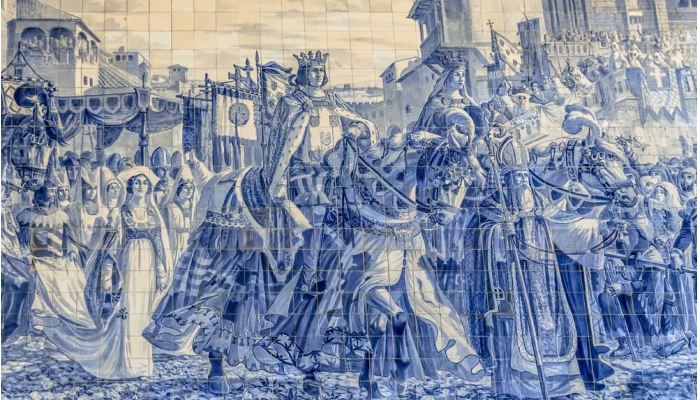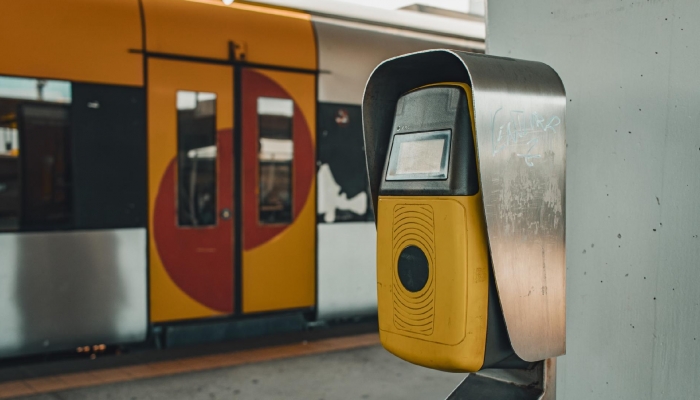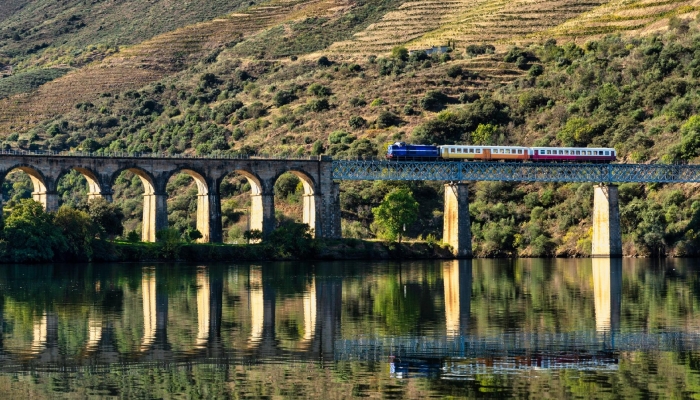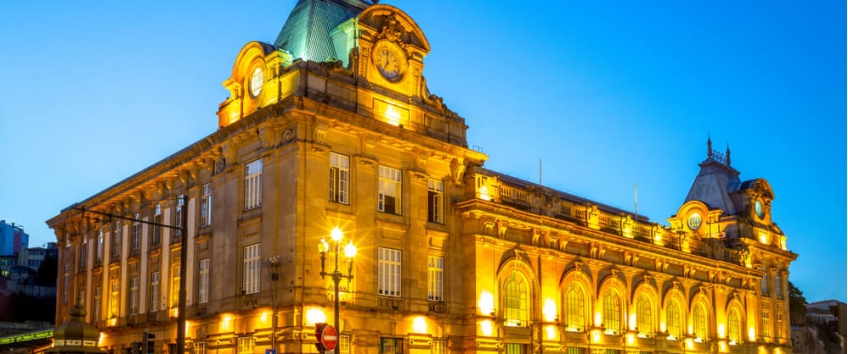Sublime Gateway to the Douro: São Bento Station - A Pinnacle of Porto's Charm
The city of Porto has so many reasons for interest that many visitors do not even go further. However, going up the Douro is to discover an enchanted world of terraced vineyards and prosperous farms. Lose yourself in the charms of the beautiful Douro Valley from one of the most emblematic points of the city of Porto - São Bento Train Station -, considered one of the most beautiful Train stations in the World.
Many of the train stations in Portugal are not just places of departure and arrival of passengers, they are spaces that have become true icons of art and that reflect, on their walls, a little of the history and traditions of Portugal. São Bento Station is one such example.
Located in the heart of the city of Porto, on Almeida Garret Square - next to Aliados Avenue- São Bento Station was considered one of the most beautiful train stations in the World and is an excellent starting point for a wonderful Cruise in the Douro.
The Experiences through Douro program and the Porto-Régua-Porto (downstream) Cruise start in the main hall of São Bento Station and are the best way to enjoy the charms of this beautiful station before starting the journey along the scenic Douro Line.
Book your cruise now and board on this adventure! All aboard!
Porto Portugal Train Station: A troubled history
The railway line was opened in 1896, but the first train that arrived there still had no station waiting for it. The construction for the current station only began in 1990, by the famous architect Marques Silva, who trained in Porto and Paris. The building was opened on October 5, 1916, in the presence of a euphoric crowd. However, only on the opening day, the architect realized that he had forgotten to include a waiting room for passengers and a ticket office in his project!
Porto Sao Bento Station: a space for art, religion, and urbanism
Forgetfulness aside, the building then opened surprised people with its beauty. The railway station is a masterpiece of iron architecture and recalls Parisian architecture from the 19th century, and its interior is breathtaking. In the main at hall (where the cloister of the extinct convent was located), the walls are covered by 20,000 painted tiles, by Jorge Colaço, which illustrate episodes from the History of Portugal, as well as the habits and customs of the northern people.
When observing these monumental panels, we almost think we see, on the right side, the entrance of D. João I in the city to celebrate his wedding with D. Filipa de Lencastre in the Cathedral, in 1387, in what would be the only royal wedding to take place in Porto.
 Entry of d. João i and d. Filipa de lencastre in porto, for the royal marriage (14th century).
Entry of d. João i and d. Filipa de lencastre in porto, for the royal marriage (14th century).On the left side, we can see the Arcos de Valdevez Tournament and the presentation of Egas Moniz with his wife and children to the king of Leon (both historical episodes from the 12th century).
We are also able to follow the evolution of means of transport in a colorful frieze around the station, which ends, precisely, with the appearance of the railway. And we observe some scenes of rural life, such as the vinyards in the Douro, the work in a watermill and the transport of Port wine in a rabelo boat. The procession of Nossa Senhora dos Remédios, in Lamego, and the pilgrimage of S. Torcato, in Guimarães, are also represented.
Exploring Porto Portugal Train Station
Porto, a city steeped in history and charm, offers not only a plethora of architectural wonders and cultural experiences but also a well-connected railway network that facilitates seamless travel within and beyond the city.
Next, we'll present you with an information resource that will improve your understanding of the city's various railway infrastructures. Let's take a closer look at some of porto portugal train station:
Campanhã Station
Serving as a major railway interchange, Campanhã Station is a bustling hub connecting regional and long-distance trains. Its modern facilities make it a convenient starting point for many journeys.
São Bento Railway Station
Renowned for its captivating azulejo tiles that depict historical and cultural scenes, Porto São Bento is not just a transportation hub but a cultural landmark.
Jardim do Morro Station
Nestled near the iconic Dom Luís I Bridge, Jardim do Morro Station offers breathtaking views of the Douro River and the historic city center. Its strategic location makes it a perfect starting point for exploring the picturesque landscapes that surround Porto.
Casa da Música Station
Located in close proximity to the renowned Casa da Música concert hall, this station seamlessly blends modern architecture with cultural vibrancy. The station serves as a gateway to the city's artistic scene and is a testament to Porto's commitment to contemporary design.
Trindade Station
As one of Porto's major transportation hubs, Trindade Station connects various metro lines, making it a pivotal point for those navigating the city. Beyond its functional significance, the station's architecture and underground galleries add a unique flair to the overall travel experience.
General Torres Station
Situated near the Douro River, General Torres Station is strategically located, offering easy access to the riverfront and nearby attractions.
Porto's Railway Stations: A Comprehensive Guide to Ticket Purchases
As you plan your rail adventures, it's crucial to be well-informed about ticket purchasing. Navigating a foreign transportation system can be a bit overwhelming, but with the following insights, you'll confidently breeze through the process.
Keep in mind the following ticketing tips:
Ticket Options at Various Stations
- Ticket Machines
These machines are strategically placed within the stations and provide a convenient and quick way to purchase tickets. The touch-screen interfaces are usually available in multiple languages, making it accessible for international travelers.
- Ticket Counters
For those who prefer a more personalized touch, staffed ticket counters are available at major stations like Trindade. Approach the knowledgeable station staff to get assistance with ticket options, travel routes, and any other inquiries you may have.
The Importance of Ticket Validation
Before boarding your train, it's crucial to ensure that your ticket is properly validated. Validation is typically done at the designated machines before proceeding to the platform.
This step is essential to avoid any inconveniences during your journey. Keep an eye out for clear signage and instructions at the stations to guide you through the validation process.
 Porto Train Station Sao Bento: Train ticket validation machine
Porto Train Station Sao Bento: Train ticket validation machineClarifying Doubts and Seeking Information
- Station Information Desks
Many major stations, including Trindade, have information desks where you can directly approach staff for assistance. These desks often have maps, brochures, and other helpful materials to aid you in planning your journey.
- Multilingual Support
In tourist-heavy areas, you'll likely find station personnel who can communicate in multiple languages. Don't be shy to ask for help in your preferred language.
From Sao Bento Train Station Porto to the Scenic Douro Line
Currently, the Porto Station serves the urban trains: the Aveiro Line, the Minho Line (destined for the magnificent cities of Braga and Guimarães) and the Douro Line, which runs the tourist route between Porto and Pocinho.
The Douro Line accompanies the upstreaming of the river and allows you to appreciate the extraordinary landscapes offered by the vineyards in slopes that are all over the Douro. Between tunnels, hills and riverside scenery, the Douro Line is highly recommended to visitors and provides one of the most famous train trips in Portugal.
 Douro Line: Where history meets breathtaking views
Douro Line: Where history meets breathtaking viewsDouro River Cruises
As you plan your journey through Porto's diverse railway stations, don't miss the opportunity to extend your adventure on the Douro River. Beyond the architectural wonders of Jardim do Morro, Casa da Música, and Trindade, the Douro River beckons with its scenic beauty and enchanting cruises. Here, we'll introduce you to various options for Douro River cruises, from day trips to multi-day excursions and even thematic experiences.
1-day Cruises on the Douro River
For those with limited time, a day cruise along the Douro offers a perfect escape. These cruises typically include stops at charming towns and vineyards along the way, allowing you to savor the essence of the Douro Valley in just a few hours.
Multi-Day Douro River Cruises
To fully immerse yourself in the splendors of the Douro, consider opting for a multi-day cruise. These extended journeys provide a more leisurely pace, allowing you to explore the region's cultural and natural treasures at a relaxed rhythm.
The Douro River, with its terraced vineyards and historic villages, unfolds its magic over the course of several days, promising an unforgettable experience.
Thematic Douro Cruises
For travelers seeking a unique and tailored experience, Thematic Douro River Cruises are a fantastic option. Whether you're a wine enthusiast, a history buff, or simply looking for a romantic getaway, there's likely a themed cruise that aligns with your preferences.
These cruises often include expert-guided tours, wine tastings, and cultural activities that enhance your understanding of the Douro Valley's rich heritage.
Porto Sao Bento Train Station and the Enchanting Douro River Await Your Discovery
As we bid farewell to Sao Bento Porto, an artful masterpiece in itself, our journey through Porto Train Station unfolds into the tranquil waters of the Douro River. Whether you opt for a day cruise, multi-day exploration, or a thematic adventure, the Douro promises an enchanting experience.
From the troubled history turned architectural gem of Sao Bento Train Station to the contemporary allure of Casa da Música, each train station in Porto is a portal to the rich cultural tapestry. And as we board the train along the scenic Douro Line, the vine-covered slopes and historic villages become a mesmerizing backdrop.
In this seamless transition from station to river, Porto unveils its allure - blend of history, art, and natural beauty. All aboard for an unforgettable journey through Porto's splendors and the enchanting waters of the Douro!

